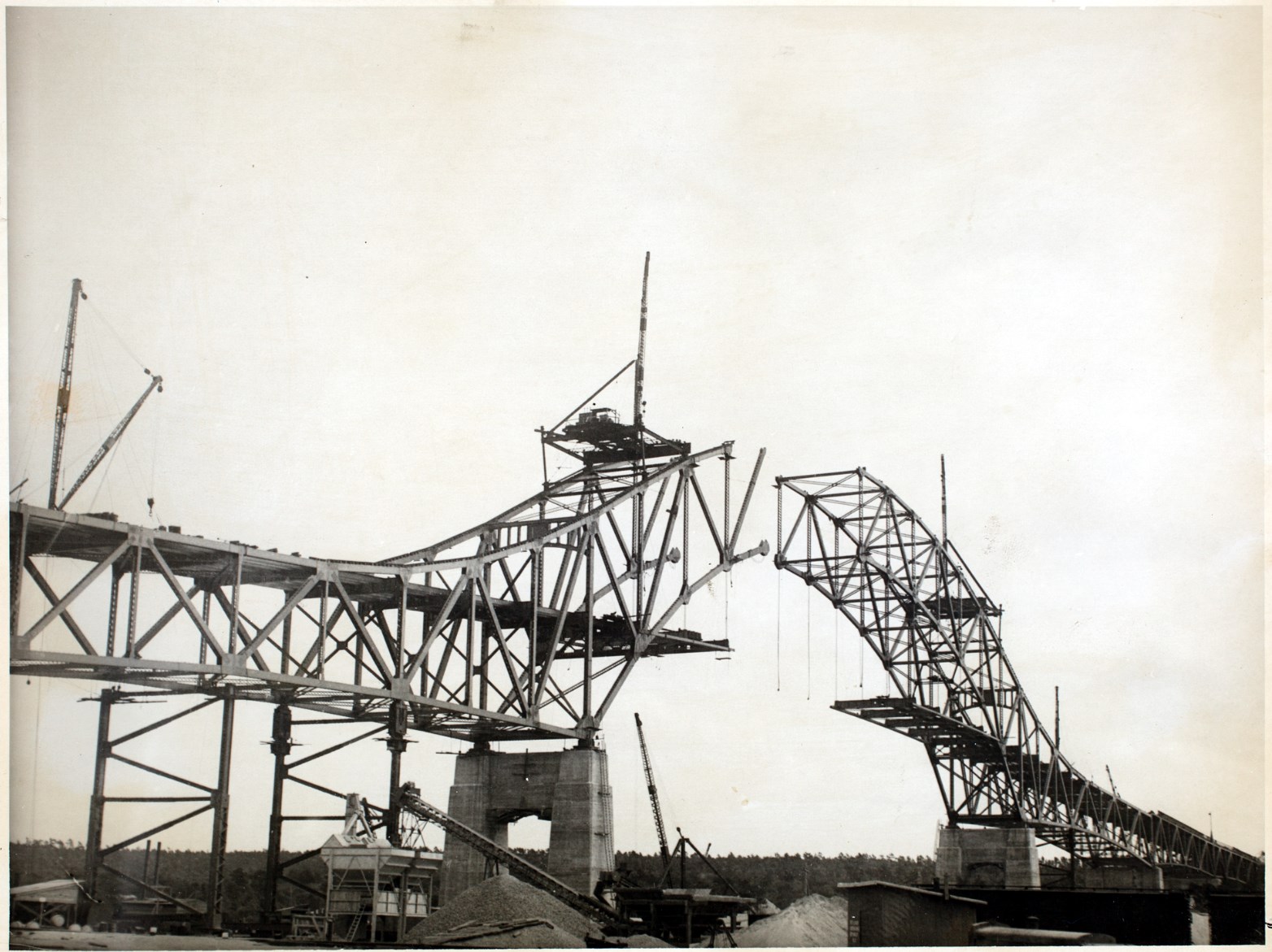Many of us cross the Cape Cod Canal regularly. Many of us boat and fish its waters as part of our Cape experiences. So we were very interested to run across some little-known stories from the histories of the Canal and its bridges. We thought you’d enjoy them too.
A story in the 12/18/1915 Yarmouth Register tells us of a tragedy that started when a car broke down in Sagamore. One of the occupants phoned a local hotel for help, back in the days when the Sagamore was a drawbridge. The proprietor of the hotel donned his fur overcoat and went in his own car to assist them. The occupants of the stranded car were transferred to his car and they returned over the drawbridge. When they were halfway across, the bridge opened to let a vessel through. The car and occupants were hurled into the canal. Miss Pierson was swept toward the bay by the current and when picked up later by a tug was lifeless and although the pulmotor was used at the hospital it was ineffectual. After some difficulty Mr. Cooney and Mrs. Starck were rescued.
In 1933 the Canal was navigated practically from end to end for the first time by a swimmer. Crawford ‘Fish’ Earnhardt, 26-year-old swimming instructor at Oyster Harbors accomplished the feat, swimming the 8.3 miles between the Bourne and Sagamore bridges in one hour and 29 minutes. Young Crawford, a native of Daytona Beach, Fla., and graduate of Duke University, made his record swim starting at the new state pier at Buzzards Bay before a large throng. When he ended his test swim at the Sandwich Coast Guard pier, Crawford though chilled and exhausted had enough reserve to aspire to a longer swim and added better than a mile to bring the total distance to 9½ miles.
According to Cape Cod Canal Fish.com, ghosts of the canal come out frequently, especially on foggy nights. Some of the ghosts are said to be spirits of past workers who died constructing the bridges. Other sightings include a local girl who was brutally murdered and commercial fishermen who perished at sea. Other ghost stories refer to 1909 preparations to build the cut-through of Cape Cod. In order for the project to be successful, there had to be major changes to the Cape’s landscape. Chief among those was the relocation of 17 bodies buried in the Bourne Cemetery and 45 bodies buried in the Emory Ellis Cemetery as both plots stood directly in the path where the canal was to be built. When it came time to relocate the bodies there was a problem. The coffins were not properly aligned with the gravestones, leading to what some believe are some troubled spirits that haunt the Canal area. One spirit is said to be wearing an all-white dress, asking in a haunting voice where a pay phone is. Sport fishermen have added to the reports of catching spirit sightings when they weren’t catching anything else.
From the 9/1/1928 issue of the Yarmouth Register: “Quite a little stir was created one day last week when a pure white whale, possibly the one seen off Gloucester recently, was seen swimming up and down the Cape Cod canal between the eastern entrance and the Sagamore bridge. The whale was pure white except for a dark spot on the nose and was about 25 feet long.”
An annual ritual saw the beautiful white Boston and New York, 402-foot ships, especially designed for the New York-Boston run via the canal, making the trip every year since 1924. Many a New Englander had fond memories of this delightful sail. Others could recall summer evenings spent sitting on the canal bank watching one of the ships approach with her searchlight stabbing through the gathering darkness as the wash surged along the canal bank. The horns blew as those on shore caught a fleeting glimpse of the dancing couples in the salon or waved to the passengers on deck. In September 1942, at the height of WWII, they joined with several similar ships to make up a convoy. A few days out to sea, a German U-boat put two torpedoes in the Boston and she went down. That evening the Germans got the New York. The loss of these ships marked the end of an era, for when they went down, the American coastwise passenger trade went with them.
In December, 1935, the Hyannis Patriot wrote that “A new chapter in the history of Cape Cod and of southeastern Massachusetts opened when Governor Curley and Col. John B. Kingman pulled the ribbon to open the Bourne bridge to traffic. A crowd estimated at much over 100,000 made the region near the bridge seem like a big city. Starting at 4:15 p.m., a three-mile parade, the longest and most brilliant Cape Cod has ever seen ushered across the long line of automobiles. About two hours later Mrs. August Belmont and Colonel Kingman opened the Sagamore bridge, concluding the procession.”
With thanks to The Cape Cod Canal Regional Chamber of Commerce and The Cape Cod Times
